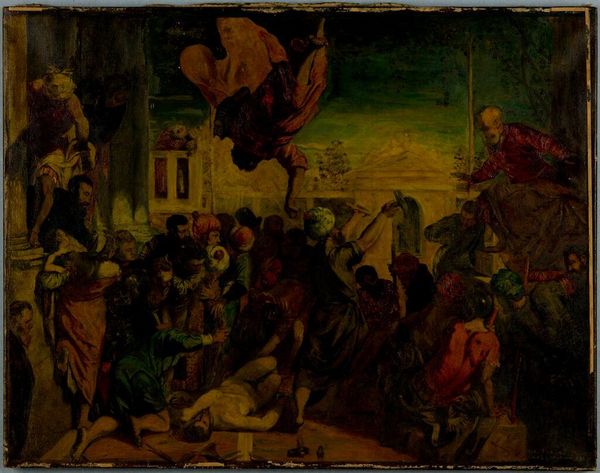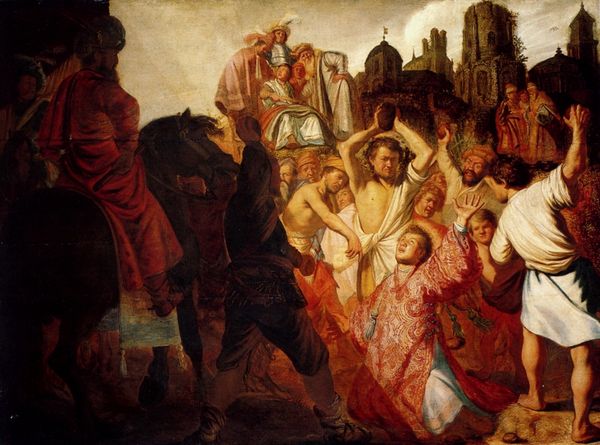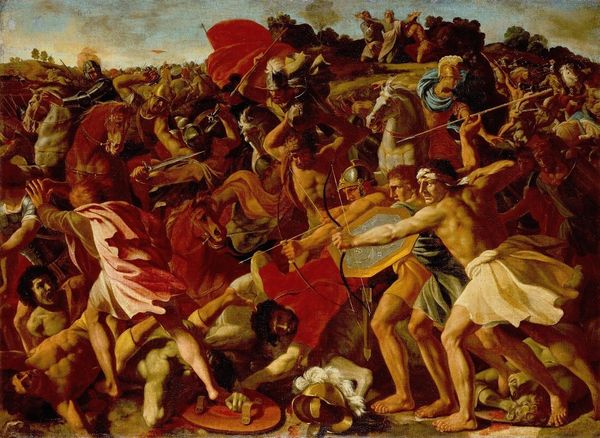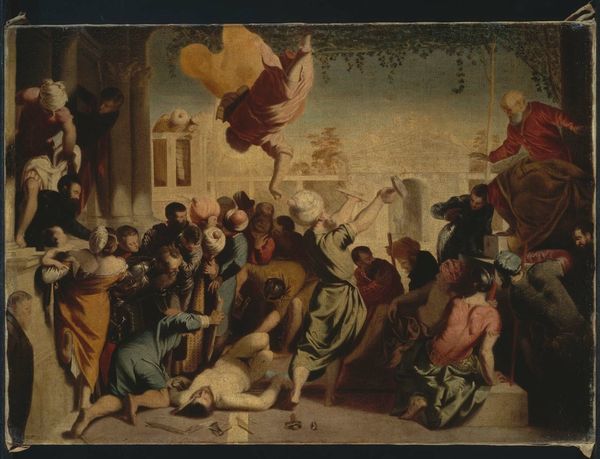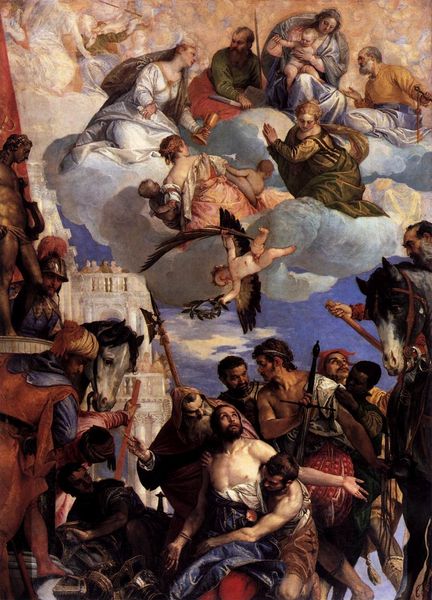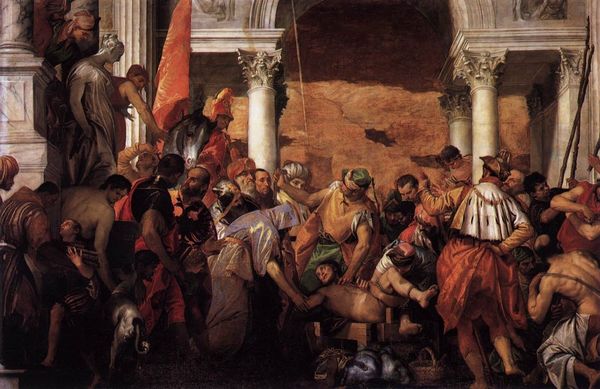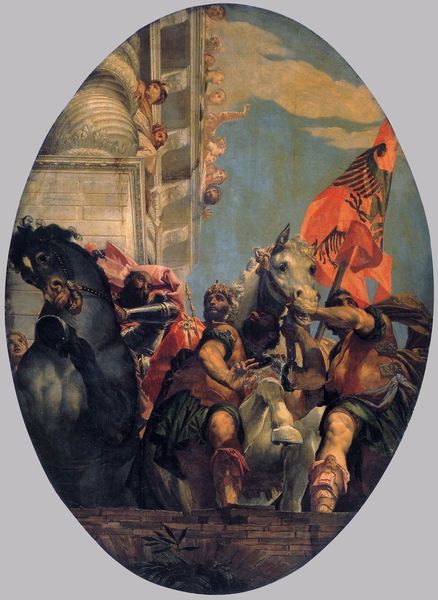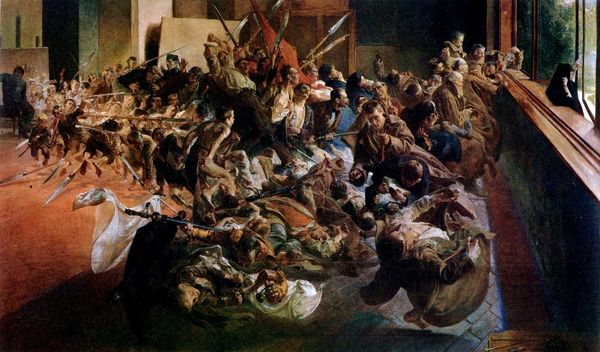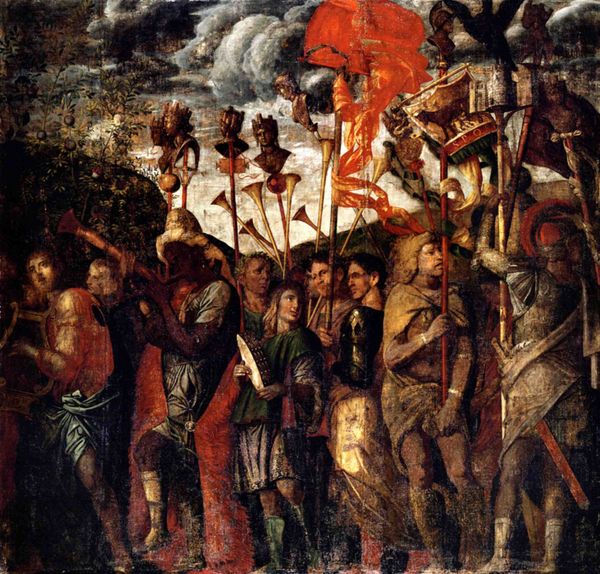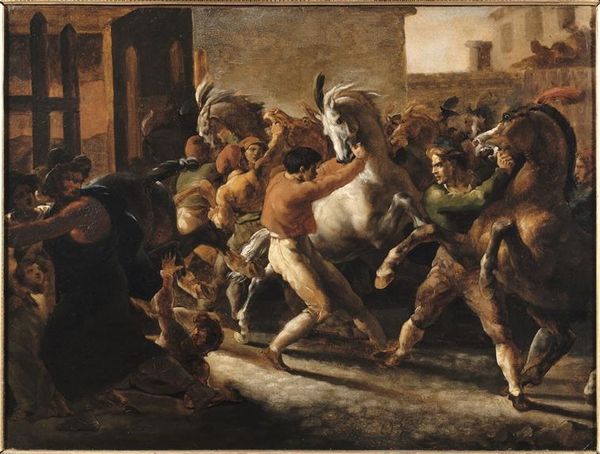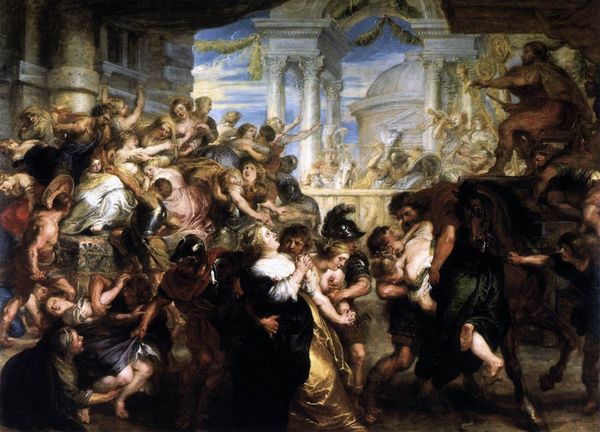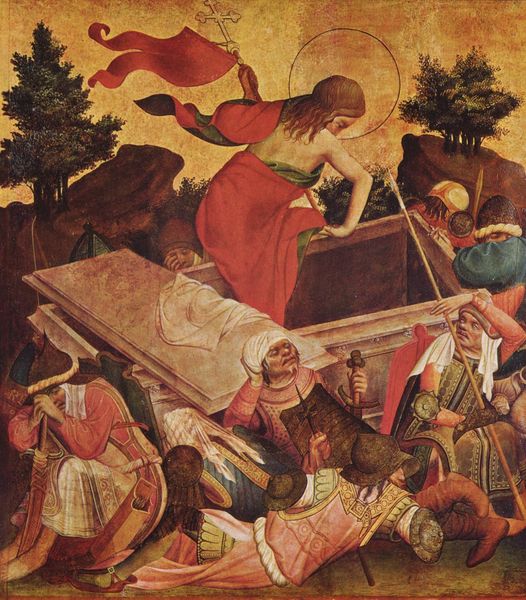
Le miracle de l’esclave, copie d’après Tintoret ou Le martyre de Saint-Marc 1850 - 1855
0:00
0:00
Copyright: Public Domain: Artvee
Curator: Let's delve into this oil painting attributed to F\u00e9lix Ziem, made between 1850 and 1855, a rendition of Tintoretto's "The Miracle of the Slave" or "The Martyrdom of Saint Mark." What's your immediate take on this piece? Editor: A swirling frenzy, almost chaotic. The eye is drawn in many directions. There’s a definite drama in the contrasting tones and that almost acrobatic figure plummeting from the sky! A divine intervention perhaps? Curator: Precisely! This copies Tintoretto's grand depiction of Saint Mark intervening to save a slave from torture. Consider the social context here; history painting often served to reinforce moral or political ideologies, and, more particularly, a celebration of divine authority and a clear message for the role of the enslaved. Editor: And in this mid-19th-century reproduction by Ziem, does the selection and depiction signal anything new? Is it simply a homage to the Baroque style, or are we to believe there may be a statement on contemporary systems of power, perhaps through this reinterpretation? Curator: It's difficult to ascertain Ziem's precise intent without further documentation, yet he was known to be prolific, so his aims may well have been aligned with producing multiple affordable copies of a masterpiece. We might consider how art circulation influences art perception and reception amongst various demographics and even, what it means to replicate trauma. Editor: I'm interested in the dramatic contrast between the frenzied chaos and that imposing, classically-structured architecture looming in the background. Almost as if this spectacle of brutality and redemption is playing out against the backdrop of idealized civilization. Curator: This jives with Baroque art's use of dynamic composition and theatricality to inspire awe and religious fervor in viewers, especially when considering the visual impact these images had when seen displayed in public forums. Editor: Absolutely, thinking of its potential reception brings to mind a different dimension. In some ways, I see parallels with modern struggles against oppression. What happens when this religious artwork gets filtered through contemporary narratives centered on human rights, particularly for those facing injustice? Curator: That interpretation brings us back to thinking about how visual imagery plays a role in social dialogue and inspires varied opinions based on differing cultural backgrounds. An intriguing point that showcases the complexity and constant shifting meanings we apply to this form of cultural capital. Editor: It underscores the need to consider diverse perspectives. Art isn’t static, and its meaning isn’t fixed. What endures over time are, it seems, ongoing interpretations influenced by those very histories the Curator so thoroughly dissects.
Comments
No comments
Be the first to comment and join the conversation on the ultimate creative platform.
